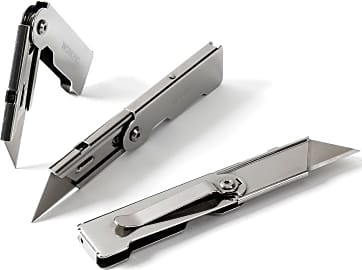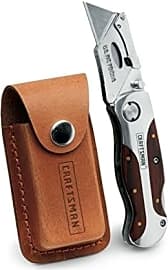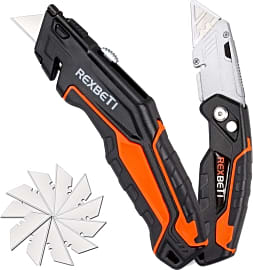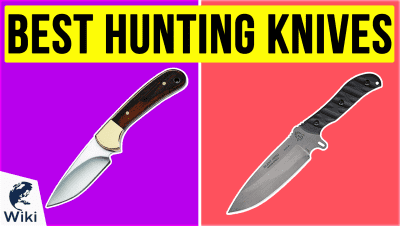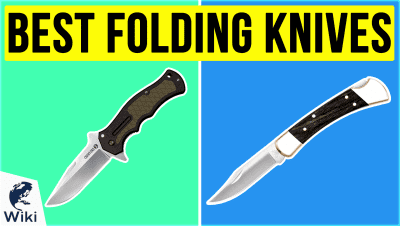The 10 Best Utility Knives

This wiki has been updated 34 times since it was first published in March of 2017. Whether you're breaking down cardboard boxes, cutting drywall, or just need a blade for everyday tasks around the house, a utility knife will make your life much easier. Also sometimes referred to as box cutters, these folding or retractable razors are compact and easy to carry around. Whether you're a crafter or a contractor, our list will have an option that fits your needs. When users buy our independently chosen editorial selections, we may earn commissions to help fund the Wiki.
Editor's Notes
April 07, 2020:
For this update, we removed the MulWark SK4 due to safety concerns, and reports of the blade dislodging on its own. We also removed the Tajima VR101, Lenox Gold, and Tajima VR101 because of availability issues.
We added a couple of compact, foldable models to provide options for people who want an alternative to larger, bulkier models. One of these, the Gerber EAB, is made by a trusted brand, and is only 2.4 inches long. It also has a nice wide clip for securing it to your pocket or belt.
We also added the Rexbeti 2-Pack, a huge value for the price. Not only does it come with two knives, but each one has a different design. This way you’re prepared for a wide range of projects and tasks, and can choose between the foldable and retractable options.
The sharp blades that make utility knives so useful, also make them incredibly dangerous. Always be aware of where your extremities are in relation to the cutting path of the blade. Also, it may seem counterintuitive, but always make sure the blade in your knife is sharp enough to cut cleanly. Dull blades are much more dangerous, as they force you to apply more energy to make your cuts, which lessens your control over it.
Your Toolbox’s Unsung Hero
Utility knives, on the other hand, are multipurpose by definition.
To understand the true worth of a quality utility knife, one only needs to look as far as the baseball diamond. To be the most valuable player on the team, you don’t necessarily have to be the biggest, strongest, fastest, or even the most talented. In many cases, a team’s most valuable player simply possesses the most useful combination of skills — someone who can play multiple positions, remain durable throughout a long season, and perform in clutch situations.
A utility knife is remarkably similar. It probably won’t be the flashiest, sharpest, or most powerful option in your arsenal, but you’ll almost certainly consider it among the most versatile, and potentially your most valuable.
The majority of knives are designed for a specific application — hunting, filleting fish, slicing vegetables, cutting steak, and so on. Utility knives, on the other hand, are multipurpose by definition.
One day you may use it to break down cardboard boxes for recycling or to trim some of your carpeting; the next, it could come in handy for scraping paint off a metal surface or simply snipping twine. It truly embodies its all-purpose classification, with the ability cut paper, sheet plastic, rope, shingles, drywall, and linoleum floors with equal effectiveness.
Typically, it features a razor-sharp blade that is both removable and easily replaceable. This makes it suitable for the tasks listed above and scores of others, as you won’t need to worry about dulling or damage as you take on the type of grunt work that can eat up blades and spit them out in next to no time.
The term "utility knife" can also refer to compact fixed-blade models that craftsmen use for more detailed artisanal projects, such as model-making or scrapbooking.
Commonly lightweight and designed with a small, thin blade, these specialized knives require more control and precision than a standard model. As with any knife, safety is paramount when you’re wielding this apparatus. You want to ensure that you’re able to maintain a healthy grip, which is easiest to do if your tool features a curved or textured handle with finger grooves. Before using it, check to confirm that the blade is locked tightly into place.
If you’re unfamiliar with this type of knife, make sure you undergo some sort of training with someone a bit more experienced before using it for the first time.
Sign The Right Player To Your Squad
In the spirit of our baseball analogy, it’s worth noting that while a certain player may have plenty of positive attributes, he or she isn’t necessarily the best fit for your team. The same goes for utility knives — once you know which characteristics you value most, it’ll be significantly easier to determine which knife is best for you.
Utility knives come in three primary styles: retractable, fixed-blade, and breakaway-blade. The materials you’ll be cutting, the level of precision you require, and personal preference will all factor into which type you choose.
Fixed-blade models feature a solid blade that’s always locked securely into place.
Fixed-blade models feature a solid blade that’s always locked securely into place. They come in a variety of handle lengths and widths, and they’re compatible with an array of blade sizes, too. When you know you’ll need a strong, stable knife for heavy-duty jobs that will require some arm strength, these are a nice choice. Some fixed-blade options will even fold up.
Though not nearly as versatile, breakaway-blade knives are the optimal style for tasks that tend to dull or damage blades consistently. Since the blades are segmented — meaning they have multiple sections you can snap off individually — you won’t have to replace them as often. They usually come with somewhere between eight and 13 sections.
Retractable models are perhaps the most popular option for general, everyday use. They’re versatile and adjustable, as you can quickly slide the blade in and out of the handle and modify the cutting depth depending on the task at hand. Some high-end brands allow you to lock the blade into multiple positions.
Remember, a ballplayer is only as effective as his bat and his glove — equipping yourself with the proper ancillary equipment is key. When you purchase your knife, make sure you pick up the appropriate blades to go with it.
You’ll be able to choose from general multipurpose blades, scoring blades for generating deep grooves, linoleum blades for flooring work, double-edged carpet blades, hook blades for trimming, and special light-duty blades for arts and crafts. If organization isn’t your strong suit, look for a knife with built-in blade storage.
Some options include additional features that are worth considering, such as safety shields to protect your hands, hanging holes for storage, string-cutting slits in the knife body, and automatic retraction buttons.
One Of Mankind’s Ancient Tools
Utility knives have been around for more than 500,000 years — our early ancestors created the first ones from stone. These antique knives helped with building structures, skinning animals, preparing food, and other general tasks associated with the age.
These were quite compact — easily stored in a pocket — but they were not mass produced until the 17th century.
The jack knife appeared centuries later, which featured a robust metal blade positioned between two pieces of metal or wood that was held together by rivets or welding. These were quite compact — easily stored in a pocket — but they were not mass produced until the 17th century.
Once the 1800s rolled around, utility knives had become readily available to members of the general public, who typically used them for outdoor endeavors such as starting campfires, butchering game, and cutting wood.
The arrival of the 20th century brought with it a revelation: the Swiss Army Knife. Originally built for soldiers, this foldable multi-tool initially offered a sharp blade, a screwdriver, a can opener, and a reamer. It was striking in appearance, with a solid grip and a polished oak body.
Of course, the Swiss Army Knife evolved significantly over the years. Different variations began to feature corkscrews, then additional smaller cutting blades, and eventually scissors, hooks, nail files, and pliers. Today, the most complex model offers more than 80 individual tools attached to one knife.




